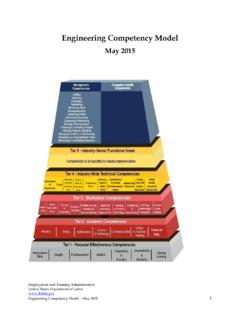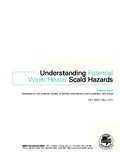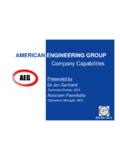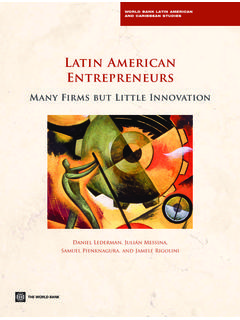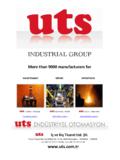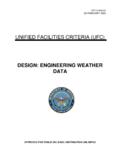Transcription of Engineering Competency Model - DRAFT
1 Engineering Competency Model - DRAFT . January 2015. Employment and Training Administration United States Department of Labor Engineering Competency Model - DRAFT 1. Table of Contents About the Model .. 3. Tier 1 Personal Effectiveness Competencies .. 6. 1. Interpersonal Skills .. 6. 2. Integrity .. 6. 3. Professionalism .. 7. 4. 7. 5. Adaptability and Flexibility .. 8. 6. Dependability and Reliability .. 8. 7. Lifelong Learning .. 9. Tier 2 Academic Competencies .. 10. 1. Reading .. 10. 2. Writing .. 10. 3. Mathematics .. 11. 4. Science and Technology .. 11. 5. Communication .. 12. 6. Critical and Analytical Thinking .. 13. 7. Basic Computer Skills .. 13. Tier 3 Workplace Competencies .. 15. 1. Teamwork .. 15. 2. Client/Stakeholder Focus .. 15. Employment and Training Administration United States Department of Labor Engineering Competency Model - DRAFT 2.
2 3. Planning and Organizing .. 16. 4. Creative Thinking .. 17. 5. Problem Solving and Decision Making .. 17. 6. Seeking and Developing Solutions and/or Opportunities .. 18. 7. Working with Tools and Technology .. 19. 8. Scheduling and Coordinating .. 20. 9. Checking, Examining, and Recording .. 20. 10. Business Fundamentals .. 21. Tier 4 Industry-Wide Technical Competencies .. 22. 1. Foundations of Engineering .. 22. 2. Design: .. 23. 3. Manufacturing and Construction: .. 25. 4. Operations and Maintenance .. 25. 5. Ethics .. 26. 6. Business, Legal and Public Policy:.. 27. 7. Sustainability and Societal and Environmental Impact: .. 28. 8. Engineering Economics .. 29. 9. Quality Control and Quality Assurance: .. 30. 10. Safety, Health, Security and Environment: .. 31. Resources Reviewed.
3 33. About the Model The Engineering Competency Model identifies the knowledge, skills, and abilities needed for workers to perform successfully in the field of Engineering . Employment and Training Administration United States Department of Labor Engineering Competency Model - DRAFT 3. The Model is depicted as a pyramid consisting of several tiers. The arrangement of the tiers in this shape is not meant to be hierarchical, or to imply that competencies at the top are at a higher level of skill. Instead, the Model 's tapered shape represents the increasing specialization and specificity of proficiencies covered. Its tiers are further divided into blocks that represent Competency areas ( , groups of knowledge, skills, and abilities), which are defined using critical work functions and technical content areas.
4 Foundational Competencies Competency A cluster of Tiers 1 through 3 represent the soft-skills and work related knowledge, skills, readiness skills that most employers demand. Each tier and abilities that affects a covers a different group of competencies: major part of one's job (a role Tier 1 Personal Effectiveness Competencies are or responsibility), that correlates with performance personal attributes essential for all life roles. Often on the job, that can be referred to as "soft skills," personal effectiveness measured against well- competencies are generally learned in the home or accepted standards, and that community and honed at school and in the workplace. can be improved through Tier 2 Academic Competencies are primarily learned in training, development, and experience.
5 A school setting. They include cognitive functions and thinking styles. Academic competencies are likely to apply to all industries and occupations. Tier 3 Workplace Competencies represent motives and traits, as well as interpersonal and self-management styles. They are generally applicable to a large number of occupations and industries. Industry-specific Competencies Tiers 4 and 5 show the industry-wide technical competencies needed to create career lattices within an industry. These competencies are considered cross-cutting, as they allow a worker to move easily across industry sub-sectors. Rather than narrowly following a single occupational career ladder, this Model supports the development of an agile workforce. Like the foundational tiers, Tiers 4 and 5 deal with distinct types of competencies: Tier 4 Industry-Wide Technical Competencies cover the knowledge and skills and abilities from which workers across the industry can benefit, regardless of the sector in which they operate.
6 Because of this, many of the critical work functions on this tier deal with awareness or understanding. Tier 5 Industry-Sector Technical Competencies represent a sub-set of industry technical competencies that are specific to an industry sector. As a result, the critical work functions deal more with performing tasks than those on Tier 4. The Employment and Training Administration's Engineering Model does not include Tier 5. competencies. Employment and Training Administration United States Department of Labor Engineering Competency Model - DRAFT 4. Using the Model While it attempts to cover a wide range of industry competencies, the Model is not intended to be a definitive list of all Engineering knowledge, skills, and abilities; nor is it intended that all workers in the field possess all competencies listed.
7 The Engineering Competency Model is instead intended as a resource for further explorations of the competencies needed in this critical industry. Users of the Model are encouraged to add or subtract competencies as they see fit, as well as expand the scope of the Model to include a specific sector or occupation. For examples of how the Model can be used, please visit the Competency Model Clearinghouse ( ). The Clearinghouse also includes the Build a Model Tool, which can be used to edit an existing Model or create a new one. The Department of Labor's Employment and Training Administration (ETA) is committed to promoting reasonable testing and job accommodations for candidates with documented disabilities or health-related needs, as recognized under the Americans with Disabilities Act (ADA) Amendments Act of 2008.
8 For organizations that conduct any testing or assessments based on identification of competencies we recommend that they treat every request for accommodations on a case-by-case basis and that they have established policies and procedures giving people with disabilities or health-related needs equitable access to jobs in the industries represented here. Using appropriate accommodations or adaptive devices will ensure that individuals with disabilities can meet the objective of specific competencies. For more information on job accommodations, please visit the Job Accommodation Network: For additional guidance on testing and assessment administration and accommodations, please see Testing and Assessment: A Guide to Good Practices for Workforce Investment Professionals Employment and Training Administration United States Department of Labor Engineering Competency Model - DRAFT 5.
9 Tier 1 Personal Effectiveness Competencies 1. Interpersonal Skills: Displaying skills to work effectively with others from diverse backgrounds. Demonstrating sensitivity/empathy Show sincere interest in others and their concerns. Demonstrate sensitivity to the needs and feelings of others. Look for ways to help people and deliver assistance. Demonstrating insight into behavior Recognize and accurately interpret the communications of others as expressed through various formats ( , writing, speech, American Sign Language, computers, etc.). Recognize when relationships with others are strained. Show understanding of other's behaviors and motives by demonstrating appropriate responses. Demonstrate flexibility for change based on the ideas and actions of others. Understand the impact of unconscious bias.
10 Maintaining open relationships Maintain open lines of communication with others. Encourage others to share problems and successes. Establish a high degree of trust and credibility with others. Respecting diversity Demonstrate respect for coworkers, colleagues, and clients. Interact respectfully and cooperatively with others who are of a different race, religion, culture, or age, or have different abilities, gender, sexual orientation, marital or family status. Demonstrate sensitivity, flexibility, open-mindedness, and inclusivity when dealing with different values, beliefs, perspectives, customs, or opinions. Value an environment that supports and accommodates a diversity of people and ideas. 2. Integrity: Displaying strong moral principles and work ethic. Behaving ethically Abide by one or more applicable ( , employer, professional society, client) strict code of ethics and behavior, even in the face of opposition.
